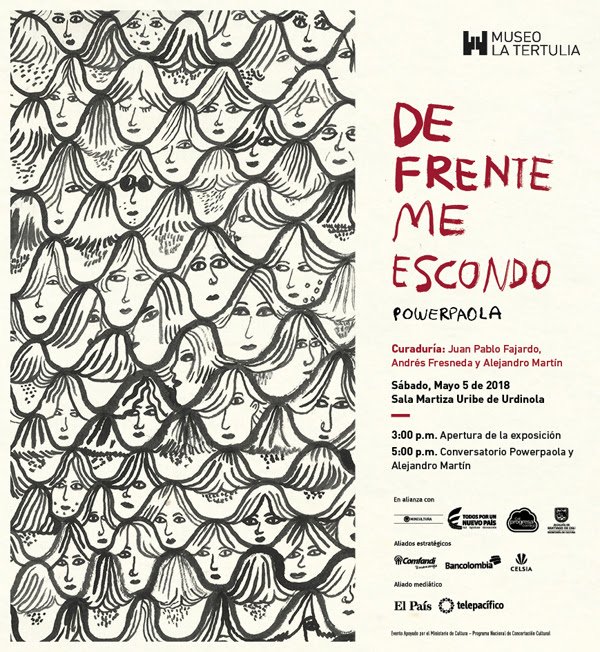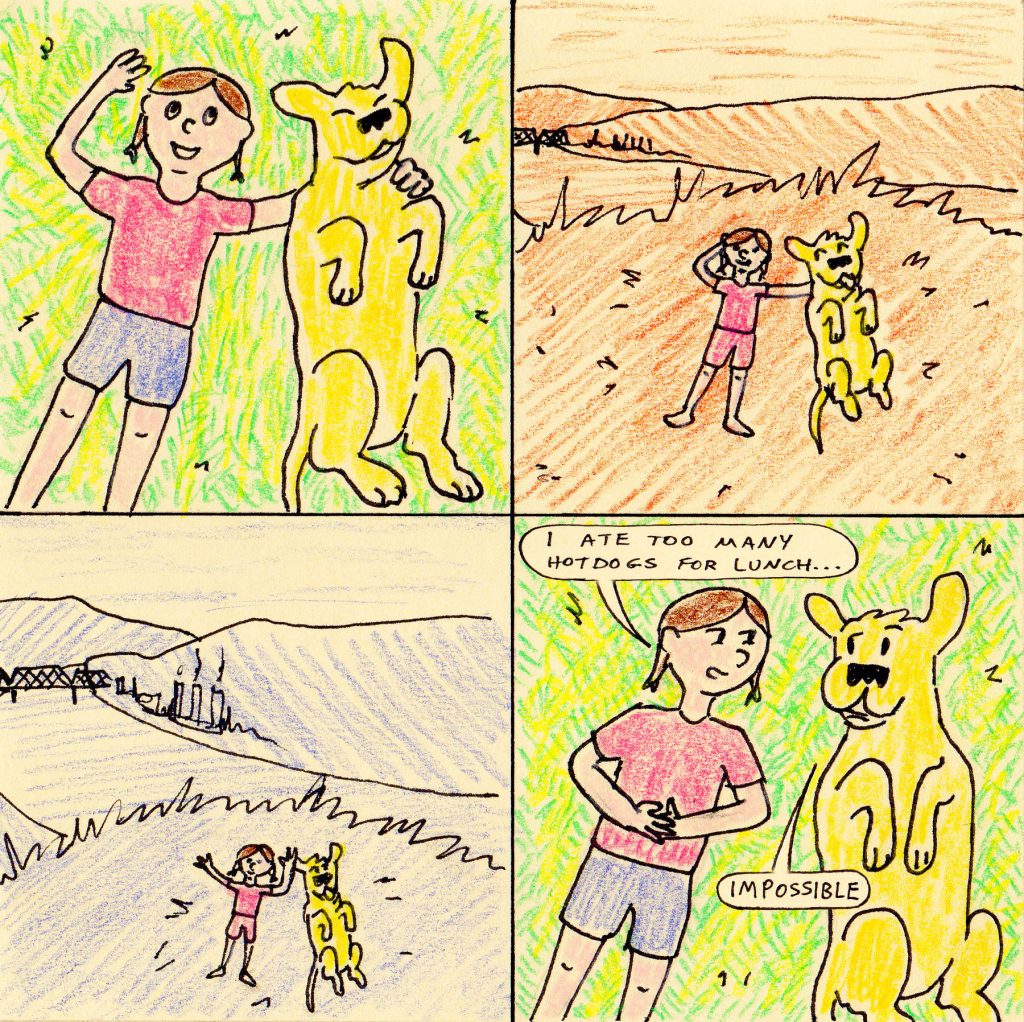Caleb OrecchioMay 21, 2017NewsCaleb Orecchio here from my remote Comics Workbook satellite site in Dayton, OH, with my recent loans from my local library. PLUS! Links links links links!
—————————————————————————————————
Just wanted to share some recent comic loans from my library. As a cartoonist and comics fundamentalist, I take it upon myself to acquire relics and learn about the strange, vast history that is Comics and its culture. To do that I must scour the Earth for holy and out-of-print works that do not manifest themselves at any common altar or place of business. Below are some of those very works. My spiritual venture is gradual and my knowledge is full of holes, but every day I work to fill them so don’t be surprised if some of these books are par for the course where you come from. I consider myself well versed in the Comics Gospel, but I am always learning.
Most of these comics are either published by the late PictureBox or edited by its proprietor, Dan Nadel. In fact, they all are except Girl Stories by Lauren Weinstein—and I suppose it’s worth noting, Weinstein would be published by PictureBox in 2008 with her book Goddess of War, so in a way, the theme stays in tact.
Instead of attempting to write about these works, I just want to share them to a.) remind those of who have read and loved the below comics, and to b.) make others still early in their walk with comics aware or, if you will, see the light.
—————————————————————————————————
Announcing the Summer Semester of the Santoro Correspondence Course for Comic Book Makers!
8 weeks! 500 bux! Payment plans are available! Summer Course starts June 1st 2017!
Applications are due by May 25th.
Visit THIS page for more details and email santoroschool@gmail.com with applications and questions.
—————————————————————————————————
I’d also like to make an edit to my post last week about comics on Instagram. This would go in the “more or less daily” section of the checklist: Pittsburgh cartoonist Bill Wehmann has an account called @fuckingdoomed. Please add this account to your checklist. Thanks -CO
—————————————————————————————————
if you don’t know, now you know
I found this article at The Atlantic to be very interesting. Teachers using a digital comics generator, Make Beliefs Comix! as therapy for students.
Process Party, Study Group Comics’ podcast hosted by Zack Soto and Mike Dawson, has a great interview with Tom Spurgeon. With this episode, we are getting some behind the scenes info here on Spurgeon’s oral history book of Fantagraphics, We Told You So: Comics as Art. Spurgeon is always a fun podcast guest. Here is another favorite Fanta related interview with Tom from the Comic Books are Burning in Hell vault.
Comic-book artist Rich Buckler passed away this weekend. Buckler was most known for creating the character Deathlok for Marvel. However my favorite Rich Buckler story is found in the lawsuit chapter of We Told You So: Comics as Art. Look it up.
Emil Ferris’ hit graphic novel, My Favorite Thing is Monsters, is profiled by Sharon Kennedy Wynne at the Tamp Bay Times.
At Publishers Weekly Bridgid Alverson writes about NBM’s 40th birthday. Try to contain your excitement.
—————————————————————————————————
Thoughts on the article Graphic Novels Are Trending in English Departments, and That’s a Problem – Take One:
Editor’s note: we offer two riffs/rants from Caleb because the article mentioned above is problematic and should inspire discussion in the community, and because Comics Workbook, as part of our educational endeavor, aims to encourage conversation, accountability, and growth. Instead of retracting the original, partially regrettable, comments, we have chosen to clarify and develop the ideas stated, and attempt to rectify statements that were an unintentional blunder. (Feel free to do us the kindness of simply skipping reading “Take One”.)
Caleb here: I came across this article about how reading comics in college English courses is a problem. I reluctantly agree with the general sentiment, though it is a tiresome cliche at this point. I’ll extend an olive branch – yes, Bitch Planet is not as sophisticated as The Iliad, and why any professor in any position would assign Bitch Planet to their students is beyond my comprehension. But that’s not what grinds my gears. There seems to be a lack of understanding or lack of emphasis of visual literacy in comics as an object of learning. Every college course that has comics always assigns Fun Home, Persepolis, and Maus. Each one of these titles are the same, formalistically (and they’re boring); the words explain the images, and are basically dense picture books. Don’t get me wrong, I enjoyed all these books to a degree and their social intelligence values are important, but they represent the most simplistic version of the comics form.
What I’m trying to say is that maybe if these professors assigned comics that require a more sophisticated grasp of visual rhetoric like Asterios Polyp by David Mazzuchelli or New School by Dash Shaw or almost ANY Chris Ware book (I could go on and on, I’m just listing, in my opinion, the obvious ones), there would be less resistance towards comics in the classroom. Can you imagine if college kids read Art Out of Time?!—or high school kids?!—it would blow their minds!—and imagine the discussions that would ensue! “How does Fletcher Hanks relate, visually, to William Blake?” But if JUST visual proficiency isn’t enough and they still want the degree of social commentary that Fun Home, Persepolis, and Maus bring to the table, assign Krazy Kat. I defy any dumb person who can read and understand Krazy Kat, it is only for the visually cultivated and the most worldly of reading palettes. Just ask e.e. cummings or Ernest Hemingway. And I’d be remiss not to mention the latest in Uncivilized Book’s “Critical Cartoons” series, Brighter Than You Think: Ten Short Works by Alan Moore by Marc Sobel. Moore was a loud and listened to voice in comics at one time and wrote about the issues he was morally concerned about in ways that were both overt, and symbolic; but always sophisticated.
Whatever, I’m rambling. “In five-hundred years from now, who will know the difference.”
Take Two:
Caleb here – I want to reassess my thoughts on this article. Above is a feverish stream of consciousness rant that I should have whittled down to its simplest idea. Some regrettable, though accidental, implications were made in the fervor of my failed attempt at blind rage rhetoric. I am calm now and have a clearer understanding of what I was trying to say so let me explain:
The article in question is a broad argument that comics should be taken out of college English courses, and I agree more or less to the general sentiment. The author of said article, Shannon Watkins, offers Bitch Planet written by Kelly Sue DeConnick and Fun Home by Alison Bechdel as examples of popularly assigned graphic novels (though Fun Home isn’t a novel, it’s a memoir—but whatever). Both of these books are in demand because they are highly accessible works that shed a light on feminism, diversity, LGBTQ issues, and various other important contemporary social concerns. Which is great, however…
One of Watkins’ arguments for giving comics the ax is “Texts without pictures require students to exercise abstract reasoning in comprehending the meaning of the text, leaving the accompanying visualizations to their own imagination. The images found in graphic novels, on the other hand, remove much of the need for students to exercise their intellects in order to process the main ideas.” As broad as that argument is, how can you argue with it?Bitch Planet and Fun Home are not particularly sophisticated or intellectual, and generally, (especially with Fun Home) the words describe what is happening in the images. This is true of other “academic comic mainstays” like Maus and Persepolis. I can’t argue with Watkins on this, but what I can argue is that these professors are assigning the wrong comics, because comics are not just dense picture books.
Comics are a complex sequence of images and text with a specific syntax. I think if these professors wanted graphic novels that gratify social intelligence like Fun Home and Bitch Planet, they need to dig deeper to more visually sophisticated comics like Goddess of War by Lauren Weinstein or Julie Doucet’s My New York Diary. I mean, haven’t you heard of Lynda Barry or Carol Tyler? Eleanor Davis maybe? If you want to go crazy you should buy a stack of Lale Westvind comics and see what students have to say after reading those (and Asterios Polyp by David Mazzchelli, New School by Dash Shaw, any Chris Ware comic, Art in Time by Dan Nadel—I can do this all day).
To me there is a gargantuan misunderstanding of what comics actually are in college academia. They are NOT shortcuts to get 18-year-olds to actually read; they are a visually complex form of narrative whose binary use of text and image create tension, pacing, mood, etc. Sometimes the meaning of the words and image on the same panel are mutually exclusive, which causes an inversion that can result in an inside-out meaning that the word and image could not achieve separately. Sometimes the words become part of the literal image and fuse to create a distortion between what is seen and what is read. Can you imagine the possibilities? Visual literacy is the key here. The ability to read and comprehend comics as visual rhetoric is, as I once heard Lucy Caswell say, “a complex skill.”
I’m sure academia will catch up sooner or later as they usually do, but for now I stand as a grumpy cartoonist who can’t get any satisfaction.
– CO
—————————————————————————————————
Blinkers – 5-22-2017 – by Jack Brougham
—————————————————————————————————
Suzy and Cecil – 5-22-2017 – by Gabriella Tito
Share this page: [...]




